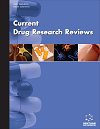
Full text loading...

The rise of antimicrobial resistance has intensified the need for novel therapeutic agents to combat infectious diseases. Among various heterocyclic scaffolds, piperazine has emerged as a promising nucleus in drug discovery due to its structural versatility and ability to enhance bioactivity. This review explores the role of piperazine-based compounds in antimicrobial drug development, focusing on design strategies, Structure-Activity Relationships (SAR), and therapeutic applications. Structural modifications of piperazine derivatives, including the incorporation of electron-withdrawing groups (Cl, Br, NO2), have demonstrated enhanced antibacterial activity, whereas electron-donating groups and certain ring substitutions (e.g., pyridine, furan) often reduce potency. Molecular docking studies have provided valuable insights into the binding interactions of piperazine derivatives with microbial enzymes and proteins, validating their mechanism of action. Additionally, the integration of computational techniques and medicinal chemistry approaches has facilitated the rational design of more potent derivatives with improved pharmacokinetic properties. The therapeutic potential of piperazine-based antimicrobials extends to bacterial infections caused by multidrug-resistant (MDR) pathogens, making them strong candidates for next-generation antimicrobial agents. This review provides a comprehensive analysis of recent advancements in piperazine-based antimicrobial drug discovery and highlights future directions for medicinal chemists in the fight against drug-resistant microorganisms.

Article metrics loading...

Full text loading...
References


Data & Media loading...